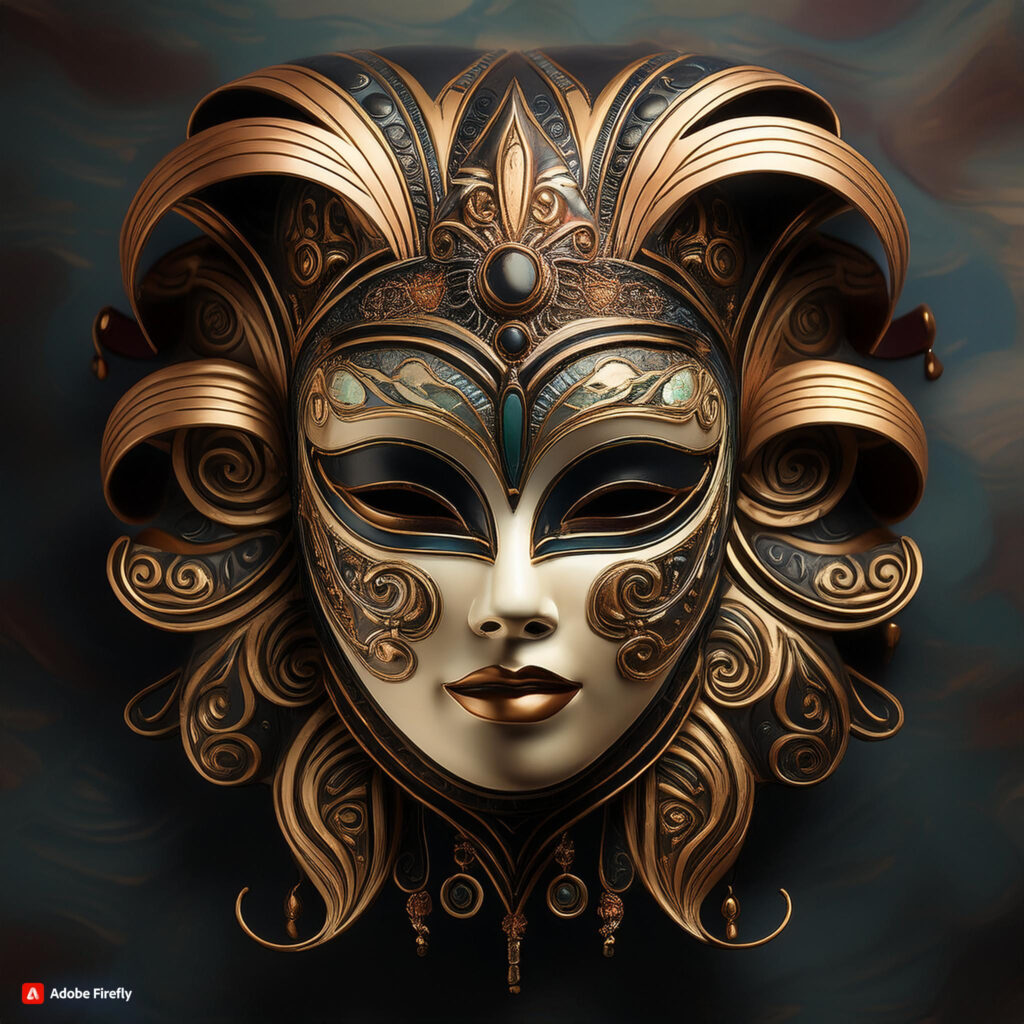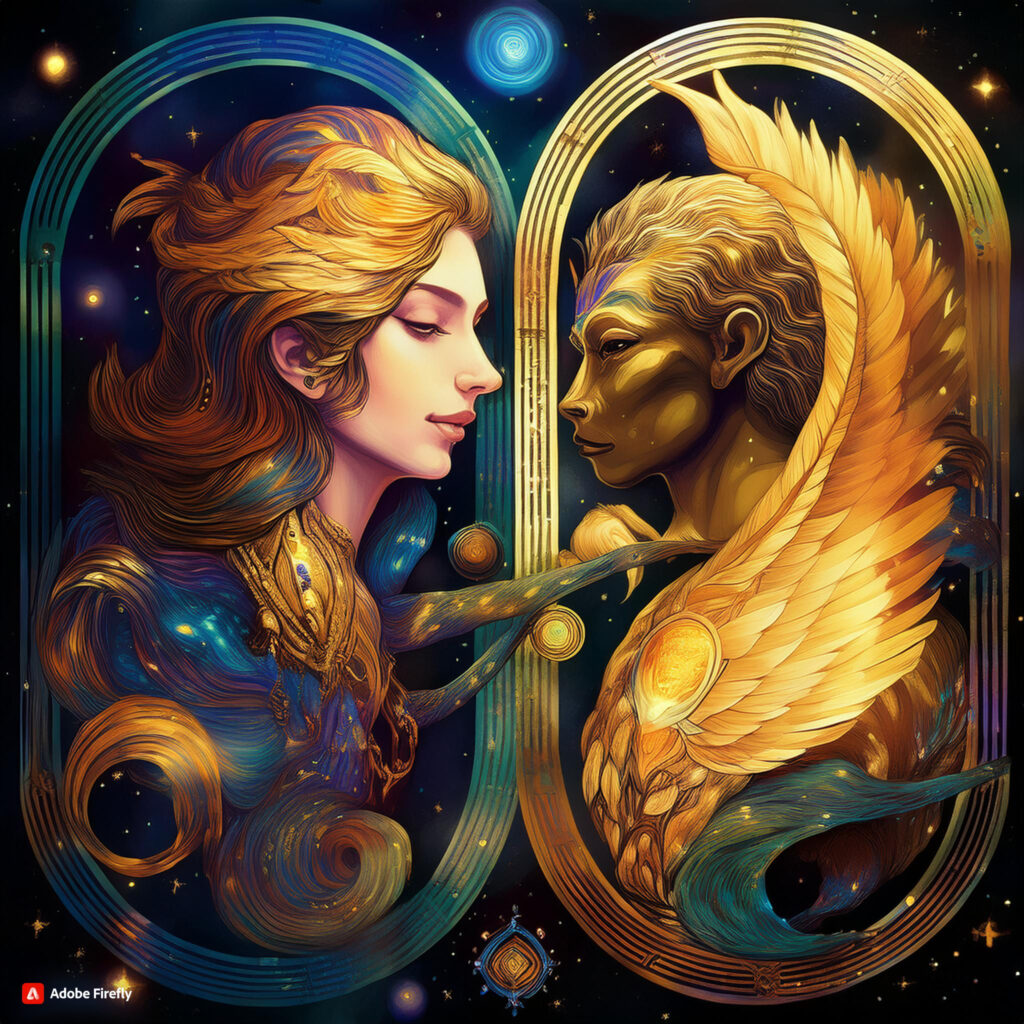Carl Jung once stated, “The privilege of a lifetime is to become who you truly are” (Memories, Dreams, Reflections). This encapsulates the essence of Jung’s model of personality, which is not merely a theoretical framework but a roadmap for exploring the deepest layers of the human psyche. Jung’s model introduces us to the intricacies of the Persona, Shadow, Anima/Animus, and Self, each representing fundamental aspects of our psychological makeup. By examining these components, we gain insights into the complexities of our identity and the journey toward individuation—the process of becoming our most authentic selves.
The Persona: The Mask We Wear

Jung defines the Persona as the “mask of the collective psyche,” a social facade that mediates between the individual and society (Two Essays on Analytical Psychology). The Persona is essential for navigating the social world, allowing us to present ourselves in ways that are acceptable to others. However, this mask is not a true reflection of our inner self; it is a role we play, a compromise between who we are and who society expects us to be.
In Two Essays on Analytical Psychology, Jung elaborates on the Persona, describing it as “a functional complex that comes into existence for reasons of adaptation or personal convenience.” The danger lies in over-identification with this mask, leading to an existence that is more about performance than authenticity. When the Persona dominates our lives, we risk becoming alienated from our true selves, trapped in roles that no longer serve our personal growth.
The Persona can manifest in various archetypes, such as the Hero, often seen in leadership roles, or the Caregiver, who suppresses their own needs to care for others. These archetypes, while socially rewarded, can lead to a disconnection from the Self if not balanced with an awareness of the deeper aspects of the psyche.
Fyodor Dostoevsky’s Notes from Underground provides a poignant exploration of the tension between the Persona and the true self. The protagonist’s refusal to conform to societal expectations, coupled with his deep-seated resentment, illustrates the psychological turmoil that arises when the Persona is rejected without integrating the underlying Shadow (Dostoevsky, 1864).
The Shadow: The Hidden Self

The Shadow represents the unconscious aspects of the personality that we repress or deny. These are the traits and desires that are incompatible with our conscious self-image and societal norms. Jung famously described the Shadow as “the thing a person has no wish to be” (Aion: Researches into the Phenomenology of the Self). It is a moral and psychological challenge to confront the Shadow, as it requires acknowledging the darker aspects of our nature—those that we find disturbing or unacceptable.
In Aion, Jung emphasizes the importance of the Shadow in the individuation process, noting that when integrated, it can become a source of creativity and vitality. However, when repressed, it can manifest in destructive ways, such as projection, where we see in others the qualities we refuse to recognize in ourselves.
The Shadow houses various archetypes, including the Trickster, who embodies chaos and unpredictability, and the Dark Mother, representing the destructive aspects of the nurturing archetype. These archetypes, though unsettling, play crucial roles in the psyche, challenging us to confront and integrate them to achieve wholeness.
Friedrich Nietzsche’s philosophy aligns with Jung’s concept of the Shadow, particularly his idea of the Dionysian—an embrace of life’s chaotic, irrational, and darker aspects (The Birth of Tragedy). Nietzsche argued that denying these aspects leads to a fragmented existence, while embracing them is essential for a full and authentic life.
A study published in the Journal of Analytical Psychology (2020) underscores the psychological benefits of integrating the Shadow. The researchers found that individuals who engage with their Shadow aspects report higher levels of self-acceptance and emotional resilience, highlighting the transformative potential of this challenging process (Smith, 2020).
The Anima and Animus: The Inner Feminine and Masculine

Jung’s concepts of the Anima and Animus introduce the idea of gendered aspects within the psyche—the Anima being the feminine aspect in men, and the Animus being the masculine aspect in women. These components are not merely about gender but represent deeper, unconscious forces that influence our relationships, creativity, and self-expression.
In The Archetypes and the Collective Unconscious, Jung describes the Anima as the “personification of all feminine psychological tendencies in a man’s psyche,” while the Animus is the personification of masculine tendencies in a woman’s psyche. These aspects are shaped by our experiences with the opposite sex and influence how we relate to others and ourselves.
The Anima and Animus contain multiple archetypes. The Anima may appear as the Seductress, embodying allure and temptation, or the Wise Old Woman, representing intuitive wisdom. The Animus might manifest as the Protector, symbolizing strength and security, or the Judge, embodying rationality and logic. These archetypes are dynamic and influence our inner life in profound ways.
Jung’s concept of syzygy, the sacred union of opposites, is central to understanding the relationship between the Anima and Animus. Syzygy represents the ideal state of balance, where these gendered aspects are harmonized, leading to a more integrated and complete self (The Archetypes and the Collective Unconscious). This balance is crucial for psychological wholeness and is often depicted in myths and religious symbolism as the union of male and female deities.
Recent research in the International Journal of Jungian Studies (2021) highlights the importance of balancing the Anima and Animus for psychological well-being. The study found that individuals who achieve this balance are more likely to experience creative fulfillment and have healthier, more harmonious relationships (Jones, 2021).
The Self: The Central Archetype of Wholeness

The Self is the archetype of wholeness, encompassing all other aspects of the psyche. It represents the totality of the conscious and unconscious mind and is the central goal of Jung’s process of individuation. The Self is not just another aspect of the psyche; it is the unifying force that integrates the Persona, Shadow, Anima/Animus, and other components into a cohesive whole.
In Memories, Dreams, Reflections, Jung describes the Self as “a goal not to be reached but a guiding light toward which the process of individuation strives.” The Self is often symbolized by the Mandala, representing unity and completeness, or the Divine Child, embodying innocence, potential, and the promise of new beginnings (Memories, Dreams, Reflections).
The Self is associated with various archetypal symbols, including the Wise Old Man or Woman, representing ultimate wisdom and guidance, and the Mandala, a symbol of cosmic order and psychological harmony. These symbols reflect the Self’s role as the organizing principle of the psyche, guiding the individual toward integration and wholeness.
The astronomical phenomenon of syzygy, where celestial bodies align in perfect harmony, serves as an apt analogy for the Self. Just as syzygy represents cosmic order, the Self represents psychological order, where all aspects of the personality align under the guidance of this central archetype (Memories, Dreams, Reflections).
Sufi poetry often touches on the concept of the Self as a divine guide leading us toward unity and wholeness. Rumi’s verses, for instance, reflect the idea of the Self as the true essence that transcends the illusions of the ego:
من کُجا ہوں، تو کُجا ہے، تیرے نام کا مطلب بھی، ہم کُجا، ہم کُجا ہے؟
(I am where? You are where? What is the meaning of your name? Where are we, where are we?) (Rumi, Divan-e Shams-e Tabrizi).
Carl Jung’s model of personality offers a profound and nuanced understanding of the human psyche. By exploring the Persona, Shadow, Anima/Animus, and Self, we gain insights into the complexities of our identity and the forces that shape our behavior, relationships, and life experiences. This model challenges us to confront the parts of ourselves that we often prefer to ignore, urging us toward a more integrated and authentic existence.
The journey of individuation is not about achieving perfection or reaching a final destination. Instead, it is a continuous process of growth and self-discovery, guided by the Self. As we navigate this journey, we are reminded of the wisdom found in divine teachings, such as the Quranic verse:
قَدْ أَفْلَحَ مَنْ زَكَّاهَا
(Those who purify themselves will surely prosper) (Quran 91:9).
Through this process of purification and integration, we move closer to becoming who we truly are—a journey that is both the privilege and the challenge of a lifetime.
Get the next post in your email.


